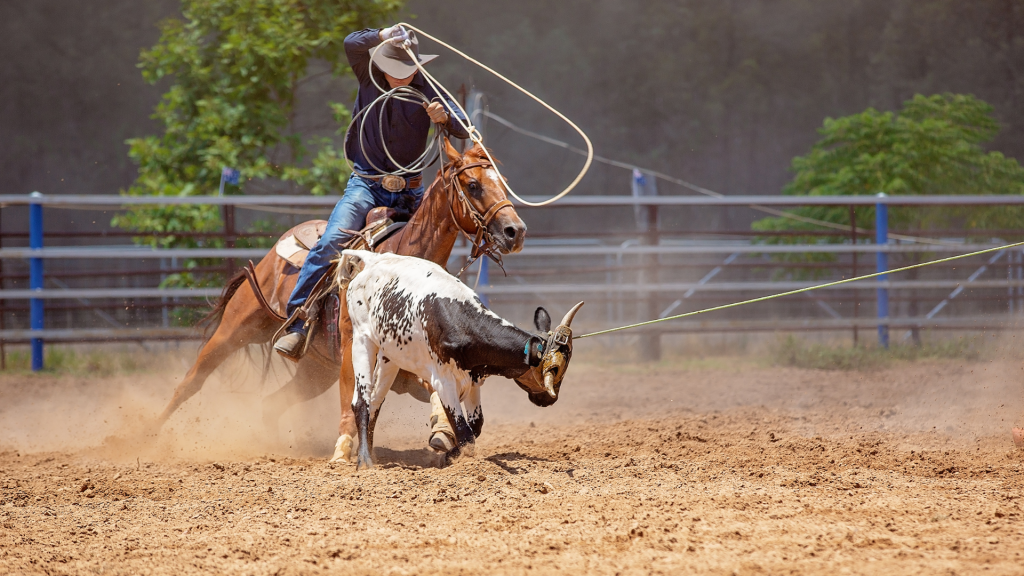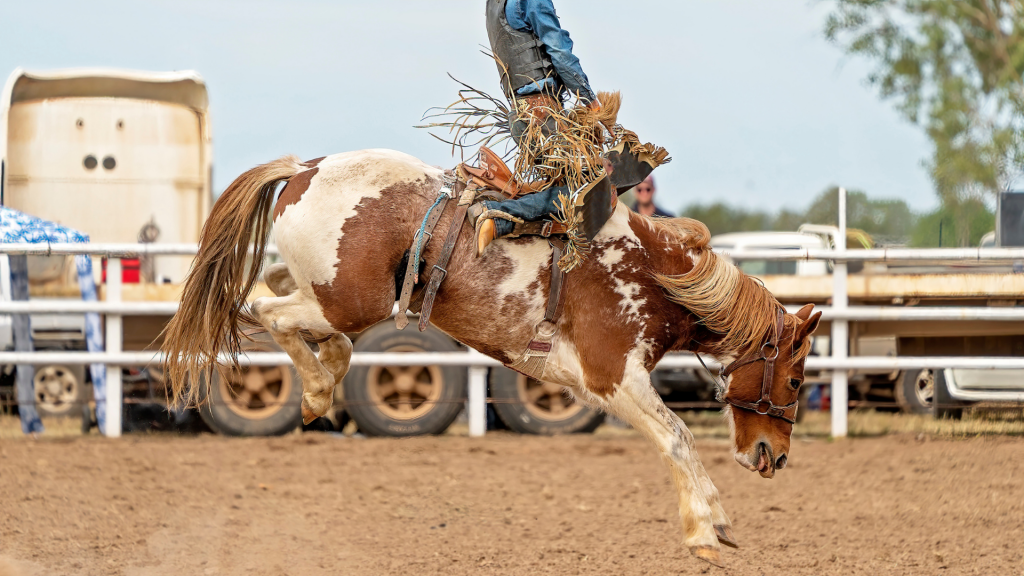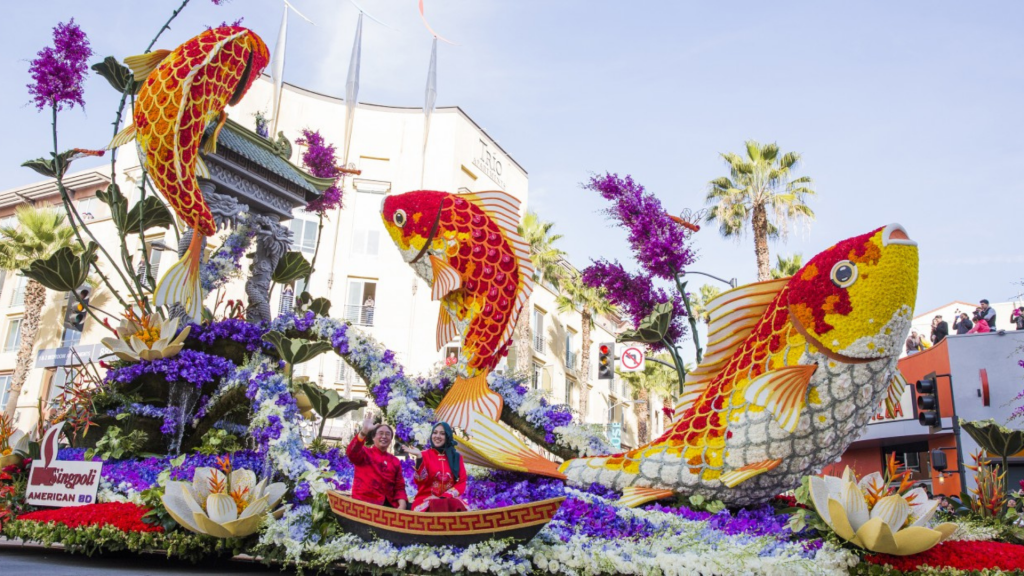Explore our blogs

How Event Staffing Enhances the Spring Training Experience
Spring training is an exciting time for baseball fans, players, and local communities. It marks the beginning of a new season, where MLB teams fine-tune their skills and spectators get a first glimpse of their favorite teams in action. However, the fulfillment of the event wouldn’t be possible without well-organized event staffing. From customer service representatives to team members who handle logistics, event staffing plays a crucial role in enhancing the spring training experience.
Behind every successful spring training season is a well-coordinated team of professionals who work tirelessly to ensure that every aspect of the event runs smoothly. Whether it’s managing crowds, assisting players, or creating a welcoming atmosphere for fans, these staff members are the backbone of the experience. Their dedication and expertise contribute to making spring training a memorable and enjoyable time for everyone involved.
The Role of Event Staffing in Spring Training
Spring training season brings a wave of enthusiasm as fans flock to stadiums like Hohokam Stadium, Scottsdale Stadium, Sloan Park, and Tempe Diablo Stadium to watch their teams prepare for the regular season.
The excitement in the air is palpable as spectators arrive early to watch their favorite teams practice and get a glimpse of the athletes up close. Families, friends, and die-hard baseball enthusiasts come together to celebrate the return of the sport, making the atmosphere vibrant and electric.
With thousands of fans attending each game, ensuring a seamless experience requires careful planning and execution. Event staffing is essential in managing the logistics, crowd control, and overall organization of these highly anticipated games. From handling ticketing and directing spectators to ensuring security and maintaining the stadium facilities, event staff play a crucial role in making sure everything runs smoothly.
Event staffing covers a wide range of responsibilities, including:
- Customer Service: Staff members greet spectators, answer questions, and provide directions.
- Security: Ensuring the safety of fans, players, and other personnel.
- Concessions and Merchandising: Selling food, drinks, and team memorabilia.
- Operations and Logistics: Managing seating arrangements, practice field setups, and game-day operations.
- Ticketing: Assisting with ticket purchases and check-ins.
- Grounds Crew: Maintaining the playing field and ensuring optimal conditions for athletes.
- Hospitality Services: Providing assistance in VIP sections, player areas, and press boxes.
- Medical and First Aid Staff: Addressing any health concerns and responding to emergencies.
Without these dedicated staff members, the fan experience at Cactus League games would be chaotic and less enjoyable.

The Impact of Event Staffing on Fan Experience
Attending a spring training game is more than just watching an exhibition game; it’s an immersive sporting event. Whether at Phoenix’s Sloan Park or Tempe Diablo Stadium, spectators expect an organized and enjoyable experience. Event staffing makes this possible in several ways:
- Efficient Entry and Seating: Properly trained staff help fans find their seats quickly and minimize delays, ensuring a smooth start to the game. Clear signage and organized entry points further enhance the efficiency of the process, keeping the crowd moving without frustration.
- Engaging Customer Service: Friendly interactions with team members not only assist fans but also create a welcoming atmosphere, enhancing overall enjoyment and encouraging positive memories of the event. Attentive staff make a significant difference in the fan experience, ensuring a memorable visit.
- Smooth Concessions Operations: Quick service at food stands ensures fans don’t miss innings of the game, while variety and quality offerings keep them satisfied. Efficiently managed queues and ample staff help prevent long wait times, contributing to a seamless event experience.
- Well-Managed Facilities: Clean restrooms, stocked supplies, and clear signage improve comfort and convenience, making fans feel more at ease throughout the event. The overall upkeep of the venue reflects a commitment to guest satisfaction, creating a welcoming atmosphere for all.
- Interactive Fan Engagement: Staff members coordinate activities such as autograph signings, mascot appearances, and giveaways, keeping fans excited and involved. These interactions help deepen the connection between the fans and the team, enhancing the overall atmosphere of the event.
- Technology Assistance: Helping fans use mobile tickets, apps, and digital scoreboards improves their overall experience by keeping them informed and connected throughout the event. Support with technology also provides added convenience and accessibility for those unfamiliar with the digital tools.
- Emergency Preparedness: Trained staff can quickly manage crowd control, provide guidance in case of unexpected situations, and ensure the safety of all attendees. With a well-prepared team, fans feel secure knowing they are in good hands in any situation.
Employee Engagement and Performance in Event Staffing
For sporting event staffing to be truly effective, managers must ensure strong employee engagement. Happy and well-trained staff members perform better and create a welcoming environment. To achieve this, teams should focus on:
- Training and Workshops: Educating employees on customer service and event planning best practices.
- Encouraging Team Collaboration: When staff members work together efficiently, they provide better service to fans.
- Providing Incentives: Recognizing top performers boosts morale and encourages high-quality service.
- Fostering a Sense of Purpose: Employees who feel valued contribute more positively to the spring training experience.
- Clear Communication: Regular briefings ensure staff are aware of game-day expectations and any new policies.
- Supportive Management: Managers should be present and approachable to provide guidance when needed.
- Employee Feedback Mechanisms: Encouraging staff to share their thoughts can improve workflow and efficiency.

The Local Community’s Role in Spring Training Staffing
Spring training is not just about baseball; it’s an event that benefits the local community. Many event staff members are local residents who take pride in welcoming visitors. The influx of fans into Arizona cities like Phoenix, Tempe, and Scottsdale stimulates the local economy through tourism, dining, and shopping. Additionally, seasonal job opportunities create employment for residents, making spring training an economic and social boon.
Economic Benefits
The arrival of baseball fans for spring training provides a substantial economic boost to the local community, impacting various sectors from tourism to small businesses. The influx of visitors and the demand for services creates a ripple effect that benefits everything from job creation to increased revenue for local establishments.
As an economic driver, spring training supports not only immediate growth but also strengthens the area’s long-term appeal as a sought-after sports destination.
- Boost in Tourism: Spring training attracts fans from across the country and internationally, bringing a significant influx of visitors to the area. As fans attend games, stay in local hotels, dine at restaurants, and shop, they boost the region’s economy. This surge in tourism benefits everything from transportation services to local attractions and strengthens the city’s reputation as a popular sports destination, encouraging future visits.
- Increased Revenue for Restaurants and Shops: The arrival of out-of-town fans results in increased activity for nearby restaurants, cafes, and shops. Local businesses see higher sales, job creation, and the chance to showcase regional products.
- Job Creation: Spring training provides seasonal employment opportunities, especially in industries that rely on temporary staff. Residents are hired for customer service, hospitality, event coordination, and security roles, offering an immediate boost to the local job market and valuable experience.
- Partnership Opportunities: The event staffing process creates opportunities for local vendors, food providers, and service companies to partner with stadiums, offering products such as refreshments and merchandise. This collaboration strengthens ties within the community and enhances the fan experience.

Social and Community Engagement
Spring training is more than just a series of baseball games; it serves as a catalyst for bringing communities together. Beyond the economic benefits, the event offers numerous opportunities for residents to actively engage and connect with one another. From instilling local pride to creating volunteer opportunities, spring training plays a key role in building stronger community bonds and inspiring future generations.
- Sense of Local Pride: Spring training becomes a community focal point, sparking pride in residents who contribute to its success. Whether through staffing or witnessing its economic impact, locals take pride in bringing the excitement to life, fueling enthusiasm that enhances the experience for both visitors and residents.
- Volunteer Opportunities: Many spring training events offer volunteer roles, where community members assist in various tasks. Volunteering provides a rewarding experience, helping the event run smoothly while offering valuable skills and networking opportunities for personal and professional growth.
- Youth Engagement: Local schools and sports organizations engage youth in spring training through workshops and mentoring programs, sparking interest in sports careers and fostering teamwork, which can inspire future careers in sports, hospitality, and event planning.
- Stronger Community Bonds: Spring training fosters unity as residents from all backgrounds come together to celebrate the event. This shared excitement strengthens community bonds, creating lasting memories and a stronger sense of identity long after the final game.
Local businesses also benefit from partnerships with event organizers, supplying food, merchandise, and services that enhance the experience for fans. Collaboration between stadiums and community organizations ensures that events run smoothly while contributing to the overall growth of the region.
Conclusion
Event staffing is a critical component of the spring training experience. From customer service to logistics, these dedicated professionals ensure that fans, athletes, and managers can focus on the game. As MLB teams prepare for the regular season, event staff members work behind the scenes to create a seamless and enjoyable environment for everyone involved.
Without their hard work, the excitement of spring training would not be the same. The next time you attend a spring training game, take a moment to appreciate the hardworking staff who make the experience memorable. Their commitment to customer service, organization, and teamwork transforms each spring training game into a thrilling and enjoyable sporting event for fans and players alike.

Key Staffing Considerations for Rodeos and Livestock Shows
Rodeos and livestock shows are massive events that celebrate agriculture, western heritage, and the thrills of competitive sports. The National Western Stock Show and Rodeo, one of the most prestigious of its kind, showcases the importance of proper staffing for an event of this scale. Whether it’s organizing the rodeo competitions, managing livestock exhibits, or ensuring safety and hospitality, the event requires a well-coordinated team to keep everything running smoothly.
Why Staffing is Critical for Rodeos and Livestock Shows
Rodeos and livestock shows are complex events with a range of activities that require precise planning and execution. From the entrance gates to the rodeo arena, every part of the event needs careful staffing to provide a safe, enjoyable experience for all attendees. Whether it’s the National Western Stock Show in Denver, Colorado or smaller events like those in Texas, Fort Worth Stock Show or Houston Livestock Show, the staffing requirements are enormous and require coordination across different teams.
Below are key staffing considerations that make these events successful:
Event Management and Operations
A successful rodeo or livestock show involves much more than the competition itself. A strong event management team ensures that all logistical aspects are covered, including ticket sales, crowd control, and the overall flow of visitors. This team’s role is to manage the timing of various events, coordinate between different departments, and ensure a seamless experience for visitors.
Key Areas for Event Operations Staffing
- Ticketing and Admissions: Ensure that event-goers have a smooth entry with minimal wait times.
- Crowd Control: Manage lines, prevent congestion, and ensure that all visitors are safely guided to the right areas.
- Facilities Management: Coordinate maintenance and ensure cleanliness throughout the venue, including restrooms, food areas, and event spaces.
- Vendor Coordination: Staff who manage food and merchandise vendors must ensure that they are stocked and provide quality services to visitors.

Rodeo Competitions and Livestock Exhibitions
The rodeo is often the main attraction at events like the National Western Stock Show. In order for this thrilling experience to run smoothly, several specific staffing roles are required:
Rodeo Staff:
- Rodeo Judges: To evaluate participants in events such as bull riding, saddle bronc riding, and barrel racing.
- Rodeo Announcers: These individuals provide live commentary and excitement for the crowd, enhancing the event’s atmosphere.
- Rodeo Clowns: Ensuring the safety of riders and providing entertainment in between the rodeo events.
- Riders and Animal Handlers: Professional cowboys and cowgirls who participate in the events, and animal handlers who make sure livestock are well-cared for and ready for their performance.
Livestock Exhibition Staff:
- Veterinary Staff: On-site medical professionals who ensure the health and safety of the animals.
- Handlers and Breeders: Individuals who present livestock to judges and help organize them in exhibits. These staff members play a crucial role in maintaining the animals’ well-being.
- Security Personnel: Safeguard both animals and attendees by preventing accidents and handling emergencies.
Safety and Security
Rodeos and livestock shows involve high-energy activities, from the intense bull riding events to managing large crowds. Safety is paramount, and staffing the event with qualified security and medical teams is essential.
Key Safety and Security Roles:
- Security Staff: Present at various locations across the event, including the entrance gates, parking lots, and around the arena. Their role is to ensure the safety of both spectators and participants.
- Medical Teams: Staff medical personnel must be on hand, ready to respond to any emergencies that may arise, whether it’s from a rider injury or crowd-related issue.
- Rodeo Safety Personnel: In addition to the medical teams, there are specific staff dedicated to ensuring the safety of the rodeo participants. These staff members watch the events closely to respond to any accidents involving the riders or animals.
Customer Service and Hospitality
Creating a positive experience for guests is critical to the success of these events. Well-trained customer service teams are essential to making visitors feel welcome, from the moment they arrive to the moment they leave.
Customer Service Staffing Roles:
- Guest Services Representatives: Staff at information booths who help guide visitors to events, answer questions, and resolve any issues.
- Hospitality Staff: Assist with VIP seating, access to exclusive areas, and general guest needs.
- Concessions and Catering: Ensure that food and drink services are well-managed and meet the needs of the crowd, which often swells with families, groups, and dedicated fans.
- Merchandise Staff: Staff who sell event-specific souvenirs, including T-shirts, hats, and rodeo memorabilia.
Volunteers
Volunteers are an important part of the event staffing landscape. While not always paid, volunteers help in a variety of roles across the event. Their enthusiasm and dedication contribute to the success of rodeos and livestock shows.
Volunteer Roles Include:
- Event Ushers: Help direct guests to their seats or provide guidance around the venue.
- Animal Care Volunteers: Assist professional handlers in caring for and managing the livestock during the show.
- Interactive Activities: Assist with organizing educational booths, providing information about the livestock, the rodeo, and the history of the event.

Marketing and Promotion Staff
Marketing and promotion are crucial for attracting attendees to the event. This includes advertising campaigns, social media management, and event promotions leading up to the event. A solid marketing team ensures that the event’s audience knows about the event and buys tickets in advance.
Marketing Team Roles:
- Social Media Managers: Help build excitement before and during the event by posting updates, behind-the-scenes content, and live action shots.
- Promotions and Partnerships: Develop partnerships with local businesses and sponsors and create event specials to increase attendance.
- Ticket Sales Team: Manage both online and in-person ticket sales, ensuring that customers are able to purchase tickets efficiently and are aware of various pricing packages.
Vendor Management and Partnerships
At a major event like the National Western Stock Show, there are typically many external vendors and partners that contribute to the event. These could be food vendors, local sponsors, and merchandise providers. Staffing these vendor relationships ensures everything runs smoothly.
Vendor Management Staff:
- Vendor Coordinators: These individuals ensure that all vendors are properly set up, have what they need, and are adhering to the event guidelines.
- Sponsorship Managers: Build relationships with sponsors, ensuring their needs are met and their branding is represented throughout the event.
Conclusion
Staffing for rodeos and livestock shows is complex but necessary for the success of these events. From the safety of the participants to creating a memorable experience for visitors, every role plays a critical part in making the event run smoothly. A dedicated team of event managers, security personnel, customer service staff, volunteers, and more help deliver an unforgettable experience.
With the right mix of experienced staff, rodeo and livestock show organizers can ensure that their event remains a premier destination for both competitors and fans. Whether it’s the National Western Stock Show or a local rodeo event, the importance of strong, well-coordinated staffing cannot be overstated.
If you’re organizing a rodeo or livestock show, remember that investing in your team and ensuring the right people are in place is essential for creating a safe, enjoyable, and exciting event for all attendees.

Emerging Trends at the North American International Auto Show
The North American International Auto Show (NAIAS), held annually in Detroit, is one of the most significant events in the global automotive industry. It attracts automakers, industry professionals, journalists, and car enthusiasts from around the world.
As the automotive industry continues to evolve at a rapid pace, NAIAS serves as a powerful platform for showcasing cutting-edge technologies, new model releases, and emerging trends that are reshaping how we drive and interact with vehicles. From electric vehicles (EVs) to autonomous driving and sustainability, the 2025 show highlights both exciting innovations and the shifting consumer preferences that are driving the future of mobility.
The Rise of Electric Vehicles
Electric vehicles (EVs) have become the dominant force at the North American International Auto Show (NAIAS) in recent years. As the automotive industry embraces cleaner energy, the Detroit Auto Show serves as the perfect stage for unveiling the latest electric innovations.
In 2025, the EV market is more diverse than ever, featuring:
- Cutting-edge designs
- High-performance models
- Enhanced sustainability features
General Motors, Ford, and Chevrolet Leading the Charge
Three major North American brands are driving the EV revolution:
General Motors (GM)
- Chevrolet’s Corvette E-Ray is a standout hybrid electric vehicle
- Combines high-performance engineering with eco-friendly power
- Boasts impressive acceleration and handling while maintaining sustainability
Ford
- Expanding its electric lineup with the 2025 Ford Mustang and Ford Fusion EV
- Blends the thrill of driving with zero-emissions benefits
- Committed to making sustainable driving accessible without sacrificing performance
Electric Startups Seizing the Spotlight
It’s not just traditional automakers making waves—electric startups are also stepping into the spotlight.
Rivian
- Specializes in rugged electric trucks and adventure-ready vehicles
- Appeals to eco-conscious consumers who value performance and sustainability
Lucid Motors
- Focuses on luxury EVs with sleek designs and high-end technology
- Competes with traditional luxury brands by offering exceptional range and innovation
The Future of EVs at NAIAS 2025
The rise of startups alongside industry giants highlights a shift toward a broader EV selection. The 2025 NAIAS showcases:
- Affordable electric sedans
- High-performance electric trucks
- Luxury EVs with cutting-edge features
With more choices than ever, the EV market is evolving to meet diverse consumer needs.
Cutting-Edge Technology and Smart Features
As the industry advances, it’s clear that the future of vehicles extends far beyond electric powertrains. The 2025 NAIAS is showcasing an exciting array of technological advancements that focus on improving safety, convenience, and the driving experience. These innovations span areas such as autonomous driving, in-car connectivity, and artificial intelligence (AI), all of which are reshaping how we interact with our cars.
Autonomous Driving and Advanced Driver-Assistance Systems (ADAS)
Autonomous driving is one of the most talked-about trends in the automotive industry. Major players like Ford and General Motors have been steadily integrating Advanced Driver-Assistance Systems (ADAS) into their vehicles, paving the way for the eventual arrival of fully autonomous cars.
At the 2025 Auto Show, Ford and GM are showcasing their latest ADAS systems, which include features like lane-keeping assist, adaptive cruise control, and automatic parking assist. These technologies not only enhance safety by reducing human error but also improve convenience for drivers, making their daily commutes easier and less stressful.
With each new generation of vehicles, these systems are becoming more refined, and the prospect of fully autonomous vehicles feels increasingly within reach.
Artificial Intelligence and In-Car Connectivity
In addition to autonomous driving features, artificial intelligence (AI) is playing an important role in improving the driving experience. Chevrolet’s latest Corvette, for example, boasts an upgraded infotainment system powered by AI. This system uses machine learning to analyze driver behavior and preferences, automatically adjusting settings like climate control, seat position, and even infotainment options to ensure a personalized experience.
Ford’s electric lineup is also embracing smart home connectivity, allowing users to seamlessly integrate their vehicles with their homes. This feature allows drivers to control home appliances, lighting, and security systems from their cars, creating a fully connected lifestyle. As the world moves toward smarter homes and cities, this integration of in-car and home technologies will likely become a common feature in vehicles of the future.

Sustainability: A Key Focus for Automakers
The shift toward sustainability is one of the most exciting and important themes at the 2025 NAIAS. As consumers become increasingly environmentally conscious, automakers are responding by not only producing more electric vehicles but also incorporating sustainable practices and materials throughout the entire production process.
Sustainable Materials in Vehicle Design
One of the key ways automakers are addressing sustainability is through the use of recycled and sustainable materials in vehicle designs. Lightweight composites, recycled plastics, and bio-based materials are being integrated into car interiors, exteriors, and structural components to reduce the environmental impact of manufacturing and use.
General Motors is a standout in this area, focusing on using repurposed plastics for seating and dashboards. This helps reduce waste, lowers production energy needs, and contributes to a circular economy. The company is also exploring more sustainable materials for the exterior of its vehicles, ensuring that even the most visible components of the car contribute to environmental responsibility.
Battery Recycling and Cleaner Manufacturing Practices
In addition to sustainable materials, automakers are working on making their battery production and recycling processes more environmentally friendly. Companies are focusing on improving battery recycling efficiency and reducing the environmental footprint of lithium-ion battery production.
As electric vehicles continue to gain popularity, the demand for these batteries is expected to grow, and finding solutions to make their production more sustainable is a key industry challenge.
Ford has committed to running all of its global manufacturing plants on 100% renewable energy by 2035. Similarly, General Motors is transitioning its factories to use more energy-efficient technologies, such as electric-powered machinery, and reducing their overall carbon footprint.
The Return of Iconic Models and Performance Cars
While sustainability and technology are key themes at the 2025 NAIAS, the event also honors North America’s rich automotive heritage, with the return of classic cars. Iconic performance cars, deeply rooted in American culture, are being reimagined for a new generation while preserving their legendary spirit.
Two standout models leading this revival:
- Ford Mustang – A modern take on American muscle
- Chevrolet Corvette – A high-performance legend reborn
Ford Mustang: The Evolution of American Muscle
The Ford Mustang has been a symbol of power and performance for decades. In 2025, Ford is taking it to the next level with:
- Enhanced powertrains for better performance
- New hybrid options that balance power and efficiency
- A commitment to eco-friendly innovation without sacrificing the thrill of driving
These updates prove that muscle cars can evolve to meet the demands of a greener future while still delivering exhilarating performance.
Chevrolet Corvette: An American Legend Reborn
The 2025 Chevrolet Corvette continues to redefine American performance engineering with:
- A sleeker, more aerodynamic design for improved speed
- Advanced materials that enhance both durability and fuel efficiency
- The Corvette E-Ray, a hybrid model that blends power with sustainability

Detroit’s Legacy and the Future of Performance Cars
These legendary vehicles highlight Detroit’s lasting influence as the “Motor City” and the driving force behind automotive innovation. While new technologies and sustainability take center stage, the passion for performance cars remains strong.
By merging tradition with modern advancements, the Mustang and Corvette demonstrate that the future of performance driving is both powerful and environmentally conscious.
Charity Preview and Community Engagement
Charity Preview and Community Engagement
Beyond the vehicles on display, the Charity Preview is another highlight of the Detroit Auto Show. The event not only benefits local charities but also strengthens the connection between the automotive industry and the community of Detroit. Since its inception, the Detroit Auto Dealers Association (DADA) has worked to ensure that the funds raised through the Charity Preview go toward improving the lives of children and families in the region.
Supporting Local Charities Through Experiential Marketing
The Charity Preview is more than just a fundraiser—it’s an example of experiential marketing at its finest. By allowing attendees to interact with exclusive vehicle demonstrations, network with industry leaders, and enjoy a high-end gala atmosphere, the event immerses guests in the world of luxury automobiles and innovation. This hands-on engagement strengthens brand loyalty and enhances the connection between automakers and their consumers.
Past beneficiaries of the Charity Preview include organizations like the Children’s Hospital of Michigan Foundation and the Detroit Institute for Children, which focus on enhancing healthcare and education in Detroit. The funds raised during the Charity Preview are essential in supporting these causes, helping to create positive change in the local community.
The event also offers a chance for attendees to interact with some of the most influential figures in Detroit, including celebrities, politicians, and business leaders. It’s a glamorous evening of entertainment, fine dining, and exclusive access to the public show’s auto exhibits, making it a highly anticipated event each year.
Racing Day and Performance Enthusiasts
Racing continues to be an integral part of the Detroit Auto Show. The Detroit Grand Prix, one of the most prestigious motorsport events in the U.S., intersects with the auto show, giving performance enthusiasts an exciting opportunity to witness cutting-edge racing vehicles and high-performance cars.
Ford and Chevrolet, both with deep roots in motorsport, use the Detroit Auto Show as a platform to highlight their latest performance-focused models. Whether it’s the racing-inspired Ford Mustang or the Chevrolet Corvette, the Auto Show remains a celebration of racing culture and the thrill of speed.
Conclusion
The North American International Auto Show has always been an important event for the automotive industry, and the 2025 edition promises to be one of the most exciting yet. With a focus on electric vehicles, autonomous technologies, and sustainability, the public show reflects the ongoing transformation of the industry.
At the same time, the return of iconic vehicles like the Ford Mustang and Chevrolet Corvette proves that the spirit of performance is still alive in Detroit. Whether it’s the unveiling of the latest EV models or the excitement of Racing Day, the NAIAS remains a vital platform for shaping the future of transportation and celebrating Detroit’s automotive legacy.

Volunteer and Staffing Requirements for the Tournament of Roses
The Tournament of Roses is one of America’s most cherished traditions, bringing together a dazzling array of events that culminate in the iconic Rose Parade and the Rose Bowl Game. Held annually in Pasadena, California, this New Year celebration is synonymous with vibrant floral displays, pageantry, and thrilling college football matchups. With its deep roots in history and a reputation as a premier event, the Tournament of Roses relies heavily on a well-coordinated team of staff and volunteers to bring the magic to life.
Overview of the Tournament of Roses
Founded by the Valley Hunt Club in 1890, the Pasadena Tournament of Roses has grown into a multi-day celebration that attracts visitors from across the globe. The Rose Parade, with its breathtaking parade floats and equestrian units, is a highlight of the festivities, while the Rose Bowl Game features top college football teams competing in the College Football Playoff. Over the years, the event has become a symbol of hope, renewal, and celebration as the world rings in the New Year.
From the floral presentation on Orange Grove Blvd to the prestigious Rose Court and Rose Queen, every element of this celebration is meticulously planned. Behind the scenes, an extensive network of staff, volunteers, and float builders plays a crucial role in ensuring the success of the event.
The Role of Volunteers in the Tournament of Roses
Volunteers are the backbone of the Pasadena Tournament of Roses, contributing countless hours to bring the celebration to life. These volunteer members, affectionately known as “white suiters” due to their distinctive uniforms, handle a wide range of responsibilities, from coordinating parade participants to overseeing logistics at the Rose Bowl Stadium.
Volunteer Requirements
Commitment
Volunteers need to dedicate several months to the event, attending preparation meetings, training sessions, and planning activities. This reflects the level of dedication required to manage such a large-scale event successfully.
Age and Eligibility
While adult volunteers make up most of the team, the Tournament of Roses provides opportunities for younger volunteers, like high school and college students. The emphasis on enthusiasm, dependability, and teamwork underscores the values of the Roses Association.
Application Process
Prospective volunteers apply through the official Roses Association website and undergo a formal interview and background check to ensure reliability and dedication.
Volunteer Benefits
Community Involvement
Volunteers become part of the rich cultural tradition that defines Pasadena and the Los Angeles County community. They play a significant role in upholding the event’s reputation and building local pride.
Exclusive Experiences
By participating, volunteers gain access to behind-the-scenes activities, interact with prominent figures like the grand marshal, and participate in planning premier events such as the Rose Bowl Game and the Rose Parade Float presentations.
Skill Development
The extensive nature of the event provides volunteers with opportunities to enhance their organizational, communication, and teamwork skills. It also serves as a great platform for students and young professionals to gain experience in event management.
Staffing Requirements for the Tournament of Roses
In addition to its dedicated volunteers, the Tournament of Roses relies on professional staff to manage the complex logistics and ensure a seamless experience for attendees. From planning the New Year’s Eve events to coordinating with Los Angeles County officials, the staff’s efforts are pivotal to the event’s success.

Volunteer Roles
Float Builders
- Responsibilities: Float builders assist professional float design teams, such as Fiesta Parade Floats, to create the intricate, flower-laden masterpieces featured in the Rose Parade. These floats are celebrated for their artistry and use of natural materials, like roses, seeds, leaves, and other floral elements. Volunteers help with tasks such as applying flowers, preparing materials, and ensuring the structural integrity of the floats.
- Impact: The work of float builders ensures that the floats meet the high artistic and technical standards required for the parade. Their contributions directly impact the visual appeal and global admiration of the Rose Parade Float presentations.
- Skills Gained: Volunteers develop hands-on experience in creative design, teamwork, and problem-solving while contributing to one of the most anticipated elements of the parade.
Parade Operations
- Responsibilities: Volunteers in parade operations are essential to the event’s smooth execution. They handle critical tasks, including:
- Managing equestrian units, ensuring safety and proper spacing in the parade lineup.
- Coordinating parade participants, such as marching bands, dignitaries, and specialty groups.
- Overseeing the movement and timing of the parade along key streets like Colorado Blvd and Fair Oaks, maintaining the schedule and preventing delays.
- Impact: Parade operations volunteers are the behind-the-scenes heroes who ensure the parade runs flawlessly, delighting millions of viewers both in person and on television.
- Skills Gained: Volunteers improve their organizational, time management, and interpersonal communication skills, making this role particularly rewarding for those interested in event planning or logistics.
Rose Court Support
- Responsibilities: Volunteers in this role work closely with the Rose Queen and her Rose Court, assisting with their public appearances, events, and ceremonial duties throughout the Tournament of Roses season. Responsibilities may include helping with wardrobe, coordinating schedules, and providing logistical support during high-profile appearances.
- Impact: This role highlights the ceremonial and traditional aspects of the Tournament of Roses, preserving its legacy and enriching the experience for the Rose Court and spectators alike.
- Skills Gained:
Volunteers gain experience in event coordination, public relations, and hospitality while contributing to the elegance and tradition of the event.
Post Parade Activities
- Responsibilities:
After the Rose Parade concludes, volunteers guide thousands of visitors who come to view the stunning floats during the Post Parade: A Showcase of Floats event. Volunteers assist with crowd management, provide information about the floats and floral designs, and ensure that guests have a safe and enjoyable experience. - Impact:
This role allows the public to appreciate the intricate details of the floats up close, extending the joy of the event and fostering community engagement.
- Skills Gained: Volunteers develop customer service and crowd management skills while interacting with diverse groups of visitors.
Parade Operations
- Responsibilities: Volunteers in parade operations are essential to the event’s smooth execution. They handle critical tasks, including:
- Managing equestrian units, ensuring safety and proper spacing in the parade lineup.
- Coordinating parade participants, such as marching bands, dignitaries, and specialty groups.
- Overseeing the movement and timing of the parade along key streets like Colorado Blvd and Fair Oaks, maintaining the schedule and preventing delays.
- Impact: Parade operations volunteers are the behind-the-scenes heroes who ensure the parade runs flawlessly, delighting millions of viewers both in person and on television.
- Skills Gained: Volunteers improve their organizational, time management, and interpersonal communication skills, making this role particularly rewarding for those interested in event planning or logistics.
Rose Court Support
- Responsibilities: Volunteers in this role work closely with the Rose Queen and her Rose Court, assisting with their public appearances, events, and ceremonial duties throughout the Tournament of Roses season. Responsibilities may include helping with wardrobe, coordinating schedules, and providing logistical support during high-profile appearances.
- Impact: This role highlights the ceremonial and traditional aspects of the Tournament of Roses, preserving its legacy and enriching the experience for the Rose Court and spectators alike.
- Skills Gained:
Volunteers gain experience in event coordination, public relations, and hospitality while contributing to the elegance and tradition of the event.
Post Parade Activities
- Responsibilities:
After the Rose Parade concludes, volunteers guide thousands of visitors who come to view the stunning floats during the Post Parade: A Showcase of Floats event. Volunteers assist with crowd management, provide information about the floats and floral designs, and ensure that guests have a safe and enjoyable experience. - Impact:
This role allows the public to appreciate the intricate details of the floats up close, extending the joy of the event and fostering community engagement. - Skills Gained:
Volunteers develop customer service and crowd management skills while interacting with diverse groups of visitors.
Application Process
- How to Apply:
Prospective volunteers can submit their applications through the official Roses Association website. The online form typically includes questions about availability, skills, and areas of interest. - Interview and Screening:
Applicants undergo a formal interview to assess their suitability for specific roles. Additionally, a background check is conducted to ensure the safety and reliability of all volunteers involved in this high-profile event. - Selection Criteria:
- Enthusiasm for participating in the event.
- Willingness to commit the required time and effort.
- Teamwork and communication skills.
- Training and Orientation:
Selected volunteers attend orientation sessions and receive training specific to their roles. This ensures that every volunteer is well-prepared to contribute effectively to the event’s success.

Key Staffing Roles
Event Coordinators
These professionals are the backbone of scheduling and event management. They oversee every detail of the Tournament of Roses, from the flow of the Rose Parade to the logistics of the Rose Bowl Game and post-parade activities. Event coordinators must balance creativity with precision to ensure the entire experience runs like clockwork.
Logistics Manager
Responsible for the physical and logistical setup, these managers focus on key locations like:
Orange Grove Blvd and Colorado Blvd (parade routes)
Rose Bowl Stadium (game venue)
Their duties include crowd management, transportation planning, and enforcing safety protocols. They ensure smooth transitions across multiple event sites while considering public safety and traffic.
Marketing and Communications Specialists
This team handles promotion and communication strategies for the event, working to attract spectators, engage media, and ensure parade participants and vendors are well-informed. They also help publicize the event’s highlights, such as the grand marshal, the Rose Court, and the elaborate floats.
Floral Designers and Float Builders
Working with professional float builders like Fiesta Parade Floats, these experts bring creative visions to life. They design intricate, award-winning parade floats using fresh flowers and innovative techniques, often contributing to the event’s world-class reputation for artistry.
Security Personnel
Ensuring the safety of everyone involved is a critical aspect of the event. Security staff work across major venues, including Pasadena City Hall and Rose Bowl Stadium, to manage large crowds, monitor for potential risks, and respond quickly to incidents.
Hospitality Staff
Focused on guest experiences, this group ensures VIPs, such as the grand marshal and other dignitaries, receive top-tier treatment. They oversee the comfort and engagement of high-profile guests, emphasizing the Tournament of Roses’ commitment to premier events.
Partnerships and Community Involvement
The Tournament of Roses thrives on collaboration with local organizations and sponsors. Businesses in Los Angeles County, including Sierra Madre and other nearby communities, contribute resources and expertise to enhance the event.
Key Partnerships
- Fiesta Parade Floats: Renowned for their innovative float designs, Fiesta Parade Floats plays a vital role in the parade’s success.
- City of Pasadena: From managing permits to providing services, the city works closely with event organizers.
- Local Schools and Colleges: Students and faculty participate in musical performances, floral presentations, and other parade elements.
Engaging the Community
Community members are encouraged to attend workshops, volunteer, or even join the Roses Association to support the event. The involvement of local businesses, schools, and residents fosters a sense of pride and unity.

Challenges and Solutions
Organizing an event of this magnitude comes with its share of challenges, including:
- Logistics: Coordinating the movement of thousands of parade participants, equestrian units, and floats along the parade route.
- Solution: Employ advanced scheduling software and deploy experienced logistics managers.
- Volunteer Recruitment: Attracting a sufficient number of volunteer members each year.
- Solution: Enhance recruitment campaigns by highlighting the benefits of volunteering and sharing testimonials from past participants.
- Weather Concerns: The outdoor nature of the events makes them susceptible to weather disruptions.
- Solution: Develop contingency plans, including sheltered areas and alternate routes.
- Crowd Control: Managing large crowds at locations like the Rose Bowl Stadium and Tournament House.
- Solution: Partner with local law enforcement and employ advanced crowd management strategies.
Conclusion
The Tournament of Roses stands as a testament to the power of community, tradition, and meticulous planning. From the dedicated white suitors to the professional staff, every individual involved plays a vital role in bringing this spectacular event to life. Whether you’re a volunteer member assisting with post-parade activities, a float builder crafting stunning rose parade floats, or a logistics manager ensuring smooth operations, your contributions make the Pasadena Tournament of Roses an unforgettable experience for millions around the world.
As the new year approaches, consider becoming part of this time-honored tradition. Whether as a volunteer, a staff member, or a spectator, the Tournament of Roses offers an unparalleled opportunity to celebrate creativity, teamwork, and the beauty of life—all under the vibrant California sun.

The Rise of Hospitality and Staffing Needs at the Phoenix Open
Every February, the Waste Management Phoenix Open transforms the Phoenix Metropolitan Area into a hub of excitement, drawing thousands of guests eager to witness the unique fusion of world-class golf and festival-like energy.
Nicknamed “The People’s Open,” this iconic PGA Tour event not only offers thrilling sports entertainment but also showcases the booming hospitality industry in the Phoenix MSA. However, as the tournament’s popularity surges, so does the demand for skilled workers to meet the needs of this massive event. In recent years, staffing has become a critical focus, shaping how the event’s success impacts the local economy.
What is the Phoenix Open?
The Phoenix Open, officially known as the Waste Management Phoenix Open, is one of the most popular and unique events on the PGA Tour. Held annually at TPC Scottsdale in Arizona, the tournament is renowned for its lively atmosphere, attracting hundreds of thousands of fans from around the world. Unlike traditional golf tournaments, the Phoenix Open embraces a festival-like vibe, with live music, celebrity appearances, and the iconic 16th hole, often referred to as “The Coliseum.” This hole is famous for its stadium seating and energetic crowd, creating an unforgettable experience for players and fans alike.
The tournament has a long-standing history of excellence, dating back to 1932, and is organized by Thunderbirds Charities. Over the years, it has become a platform for showcasing top golfing talent while raising millions for local charities. With its blend of sportsmanship, entertainment, and community impact, the Phoenix Open has earned its reputation as “The People’s Open.”

Hospitality at the Heart of the Phoenix Open
The hospitality industry plays a vital role in supporting the Waste Management Phoenix Open, particularly with the influx of tourists and corporate attendees. From luxury suites at TPC Scottsdale to nearby hotel developments such as VAI Resort, the emphasis is on delivering an exceptional guest experience. Corporate sponsors, affluent fans, and celebrities often frequent the event, elevating expectations for seamless service and premium amenities.
Local stakeholders, including hotel investors, restaurants, and real estate developers, have been capitalizing on this trend, boosting economic activity in the Phoenix area. The event’s prominence on the PGA Tour calendar means it’s not just about golf; it’s about creating unforgettable experiences for attendees. To maintain this standard, significant resources are allocated to staffing and targeted advertising that attracts the best talent.
Staffing Challenges in Recent Years
Despite its allure, the hospitality sector surrounding the Waste Management Phoenix Open has faced notable staffing challenges. The sheer scale of the event—often referred to as the “Super Bowl of Golf”—requires an immense workforce. From catering and bartending to event management and logistics, open positions need to be filled swiftly and effectively.
However, like other parts of the United States, the Phoenix market has experienced a staffing shortage in the hospitality industry. This trend has been exacerbated by recent years’ economic shifts and increased competition for skilled workers. Event organizers and local businesses have had to adapt through strategic hiring practices and by offering competitive wages and incentives.
To address these gaps, collaboration between private entities and academic institutions like Arizona State University has become essential. Programs focused on hospitality management and event coordination are helping cultivate a pipeline of qualified team members eager to contribute to events like the Phoenix Open.

Economic Impact of the Waste Management Phoenix Open
The economic impact of the Waste Management Phoenix Open cannot be overstated. In addition to attracting more than 700,000 attendees annually, the event generates significant revenue for the local economy. The ripple effects are felt across industries—from real estate to financial services and tourism. Businesses in downtown Phoenix and the surrounding metro area benefit immensely, with many reporting record-breaking sales during the tournament week.
Much of this success is tied to the meticulous planning and staffing efforts that ensure everything runs smoothly. Adequate staffing is not only critical for operational efficiency but also for enhancing the guest experience. This, in turn, fosters repeat visits and bolsters the reputation of the Phoenix Open as a must-attend event on the PGA Tour.
The Role of Thunderbirds Charities
One of the most remarkable aspects of the Waste Management Phoenix Open is its commitment to philanthropy, led by Thunderbirds Charities. As the tournament’s organizing body, the Thunderbirds work tirelessly to give back to the community, supporting organizations like Special Olympics Arizona. The economic impact of these charitable efforts further underscores the event’s value to the local economy.
Yet, even the charitable side of the Phoenix Open requires robust staffing. Volunteers and team members coordinate fundraising events, manage logistics, and ensure that donations are effectively distributed. Without a strong workforce, these charitable endeavors wouldn’t be possible.
The Phoenix Open and Tourism
As one of the premier events in the United States, the Waste Management Phoenix Open attracts visitors from across the globe, boosting tourism in the region. Travelers from Los Angeles, New York, and beyond flock to the Phoenix area to enjoy the tournament and explore the vibrant local scene. For many, the event serves as an introduction to the cultural and recreational offerings of metro Phoenix, encouraging return visits and long-term tourism growth.
The tournament’s timing, coinciding with peak tourist season in Arizona, adds to the heightened demand for hospitality services. Hotels, restaurants, and transportation companies work around the clock to accommodate the influx of guests. This has led to a surge in open positions within the hospitality industry, presenting opportunities and challenges for local businesses.
Innovative Solutions for Staffing
To meet the staffing demands of the Phoenix Open, innovative solutions have emerged. Businesses have embraced targeted advertising to attract workers, emphasizing the unique benefits of working at such a high-profile event. Flexible schedules, competitive pay, and the chance to be part of an internationally recognized tournament are just a few of the incentives offered to potential staff.
Moreover, the event’s organizers have partnered with platforms like AZ Big Media and Phoenix Business Journal to highlight job opportunities and promote the tournament’s broader economic significance. By leveraging these media outlets, they’ve been able to tap into a diverse pool of talent and address the staffing shortage more effectively.

Preparing for the Future
As the Waste Management Phoenix Open continues to grow in popularity, the hospitality industry in the region must adapt to evolving demands. With ambitious projects like VAI Resort and other hotel developments on the horizon, the Phoenix market is poised for sustained growth. However, maintaining a skilled and motivated workforce remains a top priority.
Investing in workforce development, collaborating with educational institutions, and embracing technology are key strategies for addressing future staffing challenges. The success of the Phoenix Open and its impact on the local economy depend on the ability to attract and retain top talent.
Conclusion
The Waste Management Phoenix Open is more than just a golf tournament; it’s a testament to the vibrancy of the hospitality industry in the Phoenix area. From creating unparalleled guest experiences to generating millions in economic activity, the event’s influence is felt across sectors. However, none of this would be possible without the dedicated staff and workers who bring it all to life.
As the event continues to evolve, the focus on addressing staffing shortages and meeting the rising demand for hospitality services will remain critical. Through innovative solutions and strategic partnerships, the Phoenix Metropolitan Area is well-positioned to maintain its status as a premier destination for tourism and events. The Phoenix Open isn’t just about golf; it’s about showcasing the best of what this dynamic region has to offer.

What Makes Barrett-Jackson Auctions a Must-Attend Event for Automotive Enthusiasts?
For car enthusiasts and collectors alike, Barrett-Jackson auctions have become synonymous with excitement, passion, and an unparalleled celebration of automotive history. Whether you’re a seasoned collector or someone with a budding interest in classic cars, these events are much more than car auctions; they are immersive experiences that blend high-octane energy with a deep appreciation for some of the finest vehicles ever crafted.
This article explores why the Barrett-Jackson auctions are a must-attend for automotive enthusiasts and why these events hold a special place in the heart of the collector car community.
What Are Barrett-Jackson Auctions?
Barrett-Jackson Auctions are world-renowned events where collector cars, automobilia, and other unique vehicles are bought and sold through an exciting, high-profile bidding process. Established in 1971 by Tom Barrett and Russ Jackson, the Barrett-Jackson Auction Company has grown into a premier platform for car collectors and enthusiasts to connect with rare, valuable, and historically significant vehicles. Known as “The World’s Greatest Collector Car Auction,” these events attract global attention and set the gold standard for car auctions.
At their core, Barrett-Jackson Auctions are collector car auctions designed to bring together buyers and sellers in a transparent and electrifying environment. Each auction features a diverse array of vehicles, including classic cars, muscle cars, hot rods, exotics, luxury cars, and even one-of-a-kind custom builds. In addition to vehicles, Barrett-Jackson also showcases an impressive collection of automobilia, such as vintage gas pumps, neon signs, and other automotive memorabilia.
What sets Barrett-Jackson apart from other auction houses is their dedication to providing a seamless, family-friendly experience. Their auctions are more than just buying and selling; they are immersive events that feature entertainment, educational sessions, product displays in the exhibitor marketplace, and charitable auctions for a good cause. Each event is expertly organized, creating a vibrant atmosphere that appeals to seasoned collectors and first-time attendees alike.
The most prominent events on their annual calendar include the iconic Scottsdale Auction in Arizona, the Las Vegas auction, and other key showcases tied to major automotive gatherings like Monterey Car Week. These events have become must-attend destinations for anyone passionate about the world of cars, offering a one-of-a-kind opportunity to witness the history, culture, and craftsmanship of some of the world’s finest vehicles.
The Legacy of Barrett-Jackson
Barrett-Jackson, often referred to as “The World’s Greatest Collector Car Auction,” has been a cornerstone of the automotive world for over 50 years. Founded by Tom Barrett and Russ Jackson in the early 1970s, the Barrett-Jackson Auction Company was created to provide a dedicated platform for showcasing and selling collector cars. Since its inception, the company has gained a reputation for delivering live auction events that attract buyers, sellers, and spectators from around the globe.

The Barrett-Jackson Experience
Attending a Barrett-Jackson auction is unlike any other car auction experience. These events go beyond the typical transactional atmosphere of an auction house by creating a vibrant, family-friendly environment filled with entertainment, education, and automotive culture. From the high-energy live auction floor to the exhibitor marketplace, where attendees can explore automotive products, memorabilia, and merchandise, there’s something for everyone.
One of the most famous events is the Barrett-Jackson Scottsdale Auction, held annually in Scottsdale, Arizona. This flagship auction is a multi-day spectacle that draws tens of thousands of automotive enthusiasts and features a dazzling array of collector cars, from muscle cars and classic cars to modern exotics and unique customs. Additionally, Barrett-Jackson events often coincide with significant moments in the automotive calendar, such as Monterey Car Week, further enhancing their appeal.
Why Barrett-Jackson Auctions Stand Out
Unrivaled Selection of Collector Cars
Barrett-Jackson auctions are renowned for their extensive inventory of collector cars. From pristine examples of American classics like the Ford Mustang to iconic European models, the variety of vehicles ensures there’s something for every collector. Notably, muscle cars often steal the spotlight, showcasing the enduring allure of powerful, high-performance machines.
For those looking to acquire a classic car, the auction house’s meticulous vetting process ensures the authenticity and quality of each vehicle on offer. Buyers can bid with confidence, knowing that each car represents a piece of automotive history.
The Thrill of the Live Auction
The live auction atmosphere at Barrett-Jackson is electric. Watching seasoned auctioneers command the room as bidders vie for the most sought-after vehicles is a heart-pounding experience. The roar of excitement as the gavel drops on a record-breaking sale or a rare find adds a unique layer of drama and excitement that few events can match.
Whether it’s your first time at an auction event or you’re a seasoned participant, the energy of the crowd and the spectacle of seeing some of the world’s finest vehicles cross the auction block is unforgettable.
Unmatched Networking Opportunities
Barrett-Jackson auctions are a haven for car enthusiasts, industry insiders, and collectors. The event provides a unique opportunity to connect with like-minded individuals who share a passion for cars. Whether you’re discussing restoration tips, investment strategies, or simply admiring the craftsmanship of a rare vehicle, the networking potential is immense.
The Exhibitor Marketplace
The exhibitor marketplace is another highlight of Barrett-Jackson events. It serves as a hub for automotive innovation, featuring displays from major manufacturers like the Ford Motor Company, as well as specialized vendors offering parts, accessories, and memorabilia. For automotive enthusiasts, this marketplace is an incredible resource to discover products and services that enhance their own collector car experience.

Collector Cars: A Window into Automotive History
One of the key reasons Barrett-Jackson auctions are so popular is their role in preserving and celebrating automotive history. Collector cars are more than just vehicles—they are tangible links to the past, showcasing the evolution of design, engineering, and culture. For example, seeing a restored 1969 Dodge Charger or a 1957 Chevrolet Bel Air on the auction floor transports attendees back to a bygone era of innovation and style.
Barrett-Jackson auctions also highlight the significance of certain brands and models, helping to keep the legacy of iconic manufacturers alive. The Ford Motor Company, for instance, frequently garners attention at these events, with models like the Shelby GT500 and Ford GT often achieving impressive bids.
Why Automotive Enthusiasts Should Attend
For an automotive enthusiast, attending a Barrett-Jackson auto auction is akin to stepping into a paradise of cars. Beyond the sheer excitement of witnessing high-stakes bidding, the events offer a chance to explore a world-class showcase of vehicles, meet experts, and gain inspiration for personal projects or investments.
The educational aspect is equally compelling. Many auctions feature panels, presentations, and displays that delve into topics such as restoration, car history, and market trends. These insights are invaluable for both new and seasoned collectors.
Making Barrett-Jackson a Destination
Barrett-Jackson auctions are strategically hosted in vibrant locations, further enhancing their appeal. For example, the Scottsdale Auction takes place in a stunning desert setting, offering attendees the chance to explore local attractions, fine dining, and luxurious accommodations. Similarly, events tied to Monterey Car Week align with one of the most prestigious automotive gatherings in the world, creating an unforgettable experience for attendees.
Popular Posts and Stories from Barrett-Jackson
Barrett-Jackson auctions often make headlines for record-breaking sales, celebrity appearances, and notable vehicle debuts. For instance, high-profile sales of rare classic cars and muscle cars frequently capture the attention of enthusiasts and media outlets alike. Additionally, Barrett-Jackson events are known for their charitable contributions, with many vehicles auctioned to benefit worthy causes. These stories resonate deeply with the collector community and further solidify the auction house’s reputation.

The Barrett-Jackson Formula for Success
The success of Barrett-Jackson lies in its ability to combine the thrill of a collector car auction with a broader cultural and social experience. The company has effectively built a brand that appeals to a diverse audience, from hardcore collectors to casual car enthusiasts looking to learn more about the world of automobiles. Their meticulous attention to detail, transparency, and focus on community engagement have made them a leader in the car auction industry.
Conclusion
Barrett-Jackson auctions are more than just events—they are celebrations of automotive passion, history, and culture. Whether you’re in the market for a collector car, eager to experience the adrenaline of a live auction, or simply looking to connect with others who share your love for cars, these events deliver on all fronts. From the Scottsdale Auction to events during Monterey Car Week, Barrett-Jackson offers a unique blend of excitement, education, and entertainment that no car enthusiast should miss.
So, mark your calendar, pack your enthusiasm, and get ready to immerse yourself in the world of collector cars at the next Barrett-Jackson auction. You won’t just be attending an auction event; you’ll be part of a legacy that continues to shape the future of the automotive world.
